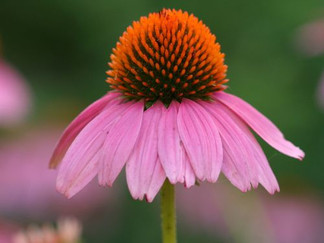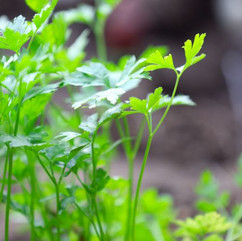Cold Stratification and How To Winter Sow Plants
- Groton Garden Club
- Dec 31, 2024
- 4 min read

Just because the weather has turned cold in Groton, it doesn't mean you can't still garden. The key to this hack is cold stratification, which is a process that harnesses the natural conditions seeds experience during winter. In nature, many seeds lie dormant in the soil throughout the cold months, undergoing physiological changes that prepare them for germination in spring. Cold stratification involves exposing seeds to a period of cold temperatures, which breaks their dormancy and triggers germination by creating mini green houses and letting them sit outside all winter.
Certain seeds, particularly those of perennial plants and wildflowers, have evolved to require a cold period before they can sprout. This adaptation ensures that seeds do not germinate during an unseasonably warm spell in winter, only to be killed by subsequent freezing temperatures. By undergoing cold stratification, these seeds are equipped to germinate in the optimal conditions of spring, when the weather is warmer and more consistent.
Why Should You Consider Winter Sowing?
Cold sowing, often referred to as winter sowing, offers numerous benefits for gardeners looking to get a head start on their gardens. This method involves planting seeds in the winter and allowing them to undergo natural cold stratification, which helps break seed dormancy and promote robust germination in the spring. Here are the key benefits of cold sowing for gardeners:
Early Start to the Growing Season
By sowing seeds during the winter, gardeners can achieve an earlier start to the growing season. Seeds that have undergone cold stratification will be ready to sprout as soon as the weather warms up, giving you a head start on planting and potentially allowing for multiple harvests in one growing season.
Higher Germination Rates
Seeds that require cold stratification typically exhibit higher germination rates after undergoing this process. Cold sowing ensures that these seeds are properly prepared to sprout, leading to more successful seedling growth and reducing the need to replant.
Less Effort and Cost-Effective
Cold sowing is a low-maintenance and cost-effective method. It doesn't require special equipment or indoor space for seed starting. Gardeners can use recycled containers and place them outdoors, where nature takes care of the stratification process. This reduces the need for indoor grow lights, heating mats, and other seed-starting supplies.
Natural Selection for Hardiness
Plants that germinate and grow from cold-sown seeds are often hardier and better adapted to local conditions. These seedlings have endured the natural winter environment, which can make them more resilient to weather fluctuations and pests.
How to Start Winter Sowing
Winter sowing is a simple and effective method that uses natural cold stratification. This technique allows gardeners to start seeds outdoors during winter, taking advantage of the natural cold and thaw cycles. And it means less work in the long run.
Choose Containers: Reuse plastic containers like milk jugs, soda bottles, takeout containers, clear plastic lettuce boxes, or you can even use party cups in a clear storage tote. Ensure that everything is clean and has drainage holes at the bottom.

Prepare the Containers: You will need to be able to open and close your containers. Things like lettuce boxes or storage totes don’t need much modification. Containers, like plastic milk jugs, will need to be cut in half to create a hinge so they can be opened and closed. Punch drainage holes in the bottom.
Fill with Soil: Add a few inches of potting soil to the bottom half of the container.
Plant the Seeds: Sow the seeds on the soil surface, following the depth recommendations on the seed packet. Lightly cover the seeds with more soil if needed. Water the soil until it is thoroughly moist.
Close, Seal, and Label: Close the container and secure it with tape. Label the container with the seed type and planting date. Avoid using tape as it is prone to peeling and fading. Instead, grab permanent markers, paint pens, or other implements that can withstand a winter outside.

Place Outdoors: Place the containers outside in a sunny spot, where they will be exposed to the elements. Make sure the spot isn’t prone to wind which can topple containers! Sitting outside, even in January, containers will act as mini-greenhouses, protecting the seeds while allowing them to undergo natural cold stratification. You can check your mini greenhouses periodically to ensure the soil remains moist. As the weather warms, the seeds will germinate, and you can transplant the seedlings to your garden without needing to harden them off.

In Groton, there are a wide variety of seeds that benefit from cold sowing due to the region’s cold winters. Below you will find pictures of plants whose seeds are well-suited for cold sowing.
Native Wildflowers
L to R: Milkweed, Coneflower, Black-Eyed Susan, Lupine, Columbine
Perennials
L to R: Coreopsis, Bee Balm, Shasta Daisy, Sedum, Penstemon
Vegetables
L to R: Spinach, Beets, Romaine Lettuce, Carrots, Kale
Herbs
L to R: Thyme, Sage, Parsley, Chives
Cold stratification is a vital process for many seeds, ensuring they germinate at the right time. Gardeners can harness their knowledge of stratification and use cold sowing to get an early start to the growing season, enhance germination rates, and grow stronger, more resilient plants. By utilizing the natural winter conditions, you can enjoy a productive and diverse garden with minimal effort and cost. Whether you’re an experienced gardener or a novice, cold sowing is worth exploring to maximize your garden’s potential. Be sure to check out University of Maryland Extension’s All The Dirt on Winter Sowing for more information.










































Comments